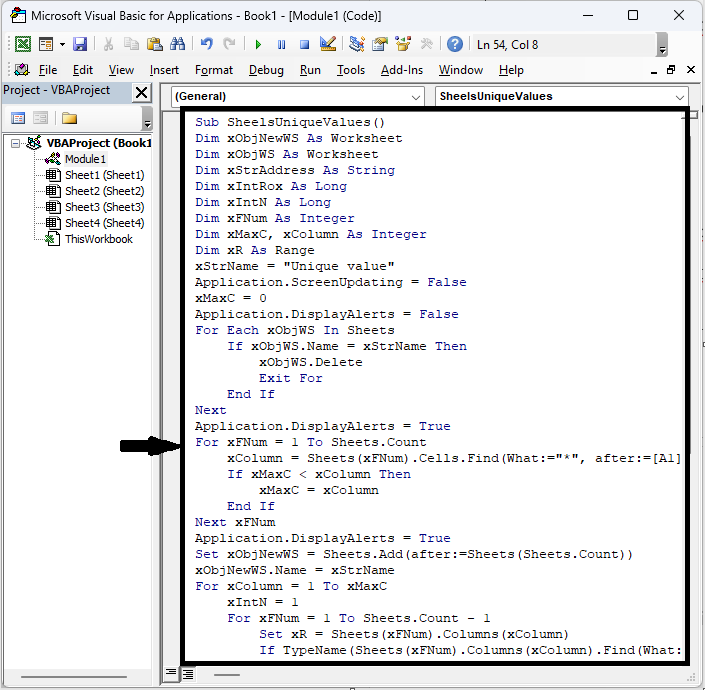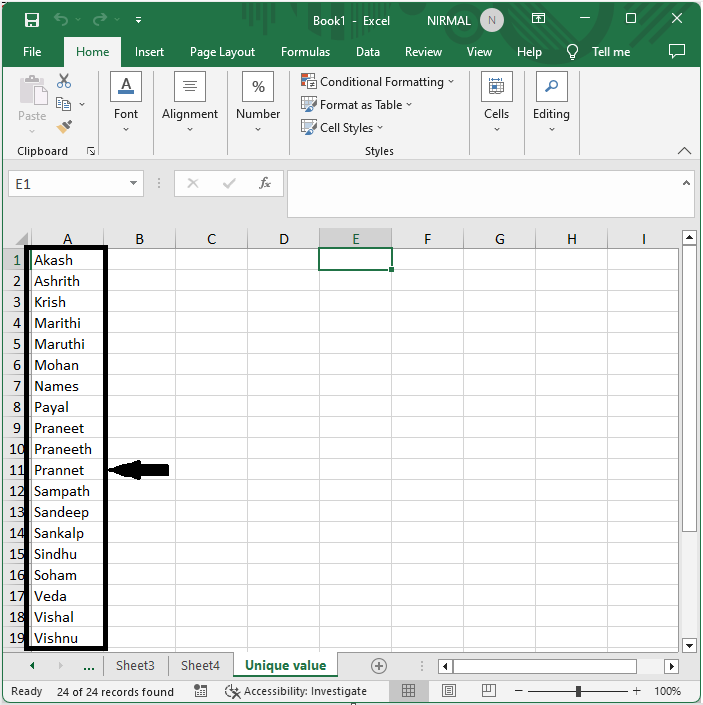
 Data Structure
Data Structure Networking
Networking RDBMS
RDBMS Operating System
Operating System Java
Java MS Excel
MS Excel iOS
iOS HTML
HTML CSS
CSS Android
Android Python
Python C Programming
C Programming C++
C++ C#
C# MongoDB
MongoDB MySQL
MySQL Javascript
Javascript PHP
PHP
- Selected Reading
- UPSC IAS Exams Notes
- Developer's Best Practices
- Questions and Answers
- Effective Resume Writing
- HR Interview Questions
- Computer Glossary
- Who is Who
How to Create a List of Unique Values from Multiple Worksheets in Excel
You can frequently find yourself in a position where you need to combine and analyse data from other worksheets if you work with large Excel workbooks with numerous pages. One frequent task is to remove any duplicate values from numerous sheets and generate a list of the unique values. This article will give you step-by-step instructions and helpful hints to help you combine data and extract special values from various worksheets, regardless of your level of familiarity with Excel. By the conclusion, you will have the skills and resources necessary to complete this activity successfully, saving you time and effort while completing your data analysis tasks. So let's get started and unleash Excel's potential to generate a thorough list of distinct values from many worksheets!
Create a List of Unique Values from Multiple Worksheets
Here we will first create a VAB module and then run it to complete the task. So let us see a simple process to learn how you can create a list of unique values from multiple worksheets in Excel.
step 1
Consider any Excel workbook where you have data in column A on multiple sheets.
First, right-click on the sheet name and select View Code to open the VBA application.
Step 2
Then click on Insert and select Module, then copy the below code into the text box.
Insert > Module > Copy.
Example
Sub SheelsUniqueValues()
Dim xObjNewWS As Worksheet
Dim xObjWS As Worksheet
Dim xStrAddress As String
Dim xIntRox As Long
Dim xIntN As Long
Dim xFNum As Integer
Dim xMaxC, xColumn As Integer
Dim xR As Range
xStrName = "Unique value"
Application.ScreenUpdating = False
xMaxC = 0
Application.DisplayAlerts = False
For Each xObjWS In Sheets
If xObjWS.Name = xStrName Then
xObjWS.Delete
Exit For
End If
Next
Application.DisplayAlerts = True
For xFNum = 1 To Sheets.Count
xColumn = Sheets(xFNum).Cells.Find(What:="*", after:=[A1], SearchOrder:=xlByColumns, SearchDirection:=xlPrevious).Column
If xMaxC < xColumn Then
xMaxC = xColumn
End If
Next xFNum
Application.DisplayAlerts = True
Set xObjNewWS = Sheets.Add(after:=Sheets(Sheets.Count))
xObjNewWS.Name = xStrName
For xColumn = 1 To xMaxC
xIntN = 1
For xFNum = 1 To Sheets.Count - 1
Set xR = Sheets(xFNum).Columns(xColumn)
If TypeName(Sheets(xFNum).Columns(xColumn).Find(What:="*", SearchOrder:=xlByRows, SearchDirection:=xlPrevious)) <> "Nothing" Then
xIntRox = xR.Find(What:="*", SearchOrder:=xlByRows, SearchDirection:=xlPrevious).Row
Sheets(xFNum).Range(Cells(1, xColumn).Address & ":" & Cells(xIntRox, xColumn).Address).Copy
Cells(xIntN, xColumn).PasteSpecial xlValues
xIntN = xIntRox + xIntN + 1
End If
Next xFNum
If xIntRox - 1 > 0 Then
xIntRox = xIntN - 1
xStrAddress = Cells(1, xColumn).Address & ":" & Cells(xIntRox, xColumn).Address
Range(xStrAddress).AdvancedFilter Action:=xlFilterInPlace, Unique:=True
Range(xStrAddress).Copy
Cells(1, xColumn + 1).PasteSpecial xlValues
Range(xStrAddress).AdvancedFilter Action:=xlFilterInPlace, Unique:=False
Columns(xColumn).Delete
Range(xStrAddress).Sort key1:=Cells(1, xColumn), Header:=xlNo
End If
Next xColumn
Application.CutCopyMode = False
Application.ScreenUpdating = True
End Sub

step 3
Then click F5 to complete the task. Then you can see that all the unique values in column A will be listed.

Conclusion
In this tutorial, we have used a simple example to demonstrate how you can create a list of unique values from multiple worksheets in Excel to highlight a particular set of data.

